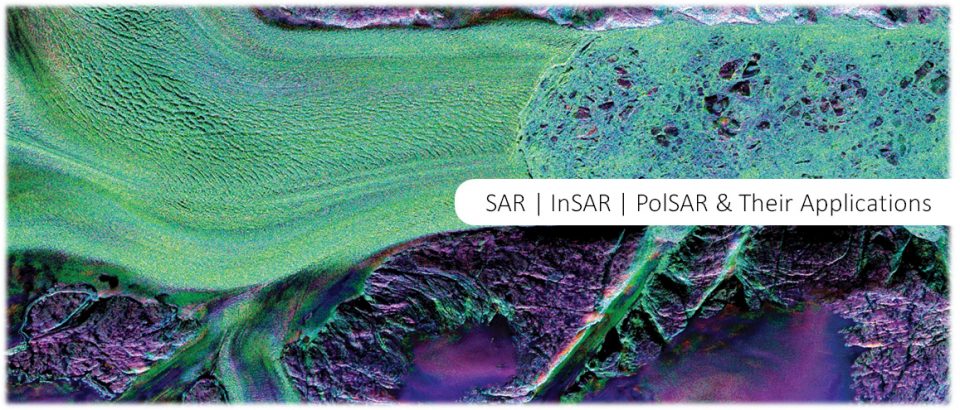 Greetings! My name is Franz J Meyer, Professor of Remote Sensing at the University of Alaska Fairbanks and the Chief Scientist of the Alaska Satellite Facility, NASA’s prime data center for microwave remote sensing data. I will be using the collective experience from both of my jobs to guide you through this graduate level class on Microwave Remote Sensing.
Greetings! My name is Franz J Meyer, Professor of Remote Sensing at the University of Alaska Fairbanks and the Chief Scientist of the Alaska Satellite Facility, NASA’s prime data center for microwave remote sensing data. I will be using the collective experience from both of my jobs to guide you through this graduate level class on Microwave Remote Sensing.
Radar sensors are amazing instruments that can sense the shape and dynamics of the earth surface during day and night and independent of weather conditions. Hence, they have become an important data source for a range of geoscience disciplines such as the study of earthquakes, volcanoes, and glaciers. Maybe more importantly, the radar remote sensing discipline is going through exciting changes right now. Increasingly free-and-open access to SAR data, improved sensor technologies, and more robust processing techniques have been transforming the science and applications portfolio that can be serviced by radar sensors (read more about new developments in radar here and here). Hence, this is the perfect time to learn about the principles and ever growing applications of microwave remote sensing.
I have been working with radar sensors for more than 15 years, gaining a wealth of experience in both the theory and the applications of radar remote sensing data. In addition to my research work, I have become somewhat of a radar evangelist in the last few years, engaging in a range of teaching and capacity building activities in the field of radar. As part of this work, I have been teaching courses on radar remote sensing for more than a decade to a broad range of audiences. My teaching portfolio includes traditional university classes as well as short courses on behalf of NASA. So overall, you should be in good hands!
Let’s get this show started!
Best, Franz
The University of Alaska Fairbanks is an AA/EO employer and educational institution and prohibits illegal discrimination against any individual: Learn more about UA’s notice of nondiscrimination.
